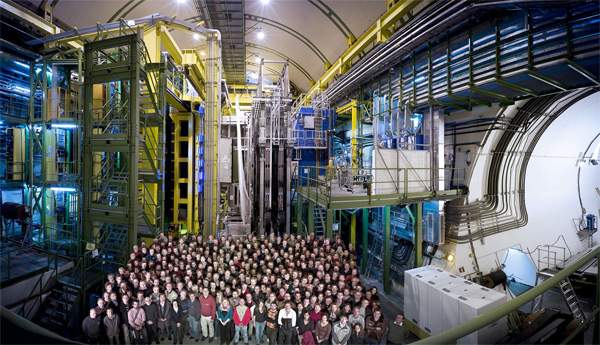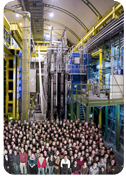Geneva, 5 March 2012. Results presented by the LHCb collaboration this evening at the annual ?Rencontres de Moriond? conference, held this year in La Thuile, Italy, have put one of the most stringent limits to date on the current theory of particle physics, the Standard Model. LHCb tests the Standard Model by measuring extremely rare processes, in this case a decay pattern predicted to happen just three times out of every billion decays of a particle known as the Bs (B-sub-s) meson. Anything other than that would be evidence for new physics. Measuring the rate of this Bs decay has been a major goal of particle physics experiments in the past decade, with the limit on its decay rate being gradually improved by the CDF and D0 experiments at Fermilab, LHCb, and most recently CMS at CERN1.
?The LHCb result on Bs decaying to two muons pushes our knowledge of the Standard Model to an unprecedented level and tells us the maximum amount of New Physics we can expect, if any, in this very rare decay,? explained LHCb spokesperson, Pierluigi Campana. ?We know this is an important result for the theoretical community and also nicely complements the direct searches in ATLAS and CMS.?
The Standard Model is a highly successful theory that has been put to the test by experiments over several decades, and come through unscathed. Nevertheless, it is known to be an incomplete theory, accounting for just the 4% of the Universe that is visible to astronomy. New physics is needed to account for the remaining 96%. Such new physics could manifest itself directly, through the production of new particles that would be detected by the ATLAS and CMS experiments, or indirectly through the influence it would have on rare processes of the kind studied by LHCb.
The LHCb particle detector is a highly specialised instrument specifically designed to study short-lived B mesons, and is systematically investigating the rarest decays of these particles. Since the Standard Model gives very precise predictions for such decays, they provide a very sensitive testing ground for new physics. The latest LHCb result constrains the decay rate for Bs to two muons to be less than 4.5 decays per billion Bs decays. That does not rule out new physics, but does start to constrain theoretical models for it, and helps to set the direction for searches in all the LHC experiments.
?Sometimes we feel like Achilles pursuing the tortoise,? said Campana, ?we believe our distance from new physics is steadily halving, but we will eventually reach it!?
This result is scheduled to be submitted to the journal Phys. Rev. Lett. on 20 March.

|

![]()
